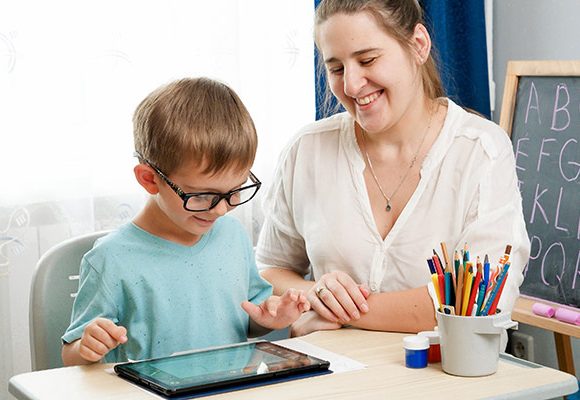Area 1: Facilitating an Inclusive World


Recognising the role of educators (including specialist practitioners) and parents/carers as facilitators and advocates for children and young people with vision impairment in education and society.
At the heart of this area is a social model of support, with a focus on inclusion and inclusive or universal practice, ensuring physical and social environments are accessible for children and young people with vision impairment. School cultures are welcoming of difference and diversity, universal design as the norm is the aspiration, with appropriate adjustments and support put in place to enable access. Particular attention may be needed as young people transition between different settings. Beyond education, this Area recognises the importance of working towards a more inclusive society, allowing children and young people with vision impairment to live as independently as possible.
For more information regarding this element of the framework, please download the Curriculum Framework for Children and Young People with Vision Impairment (CFVI) and accompanying guidance.
Examples of targeted intervention approaches:
- Identification, recognition, and understanding of the specific and holistic needs and rights of a child and young person.
- Creation of accessible physical environments, including classroom space and general school environment (e.g. accessible signage and information, keeping corridors and classrooms clear of trip hazards).
- Creation of accessible social environments (peers).
- Knowledgeable and empowered family around the child and young person.
- Knowledgeable and empowered educators around the child.
- Supporting transitions as the child/young person moves between settings.
- Creation of accessible social environments (community, work and lifelong education).
- Availability of accessible and appropriate learning materials, as directed by specialist professionals.
- Availability of accessible and appropriate learning tools, such as appropriate assistive technology, tablet computers and computers.
- Accessible infrastructures (e.g. networks, libraries, internet spaces, virtual learning environments, transport).
- Availability of accessible information for independence in adulthood (e.g. from private and public services).
Use of resources in practice
When using resources signposted via or downloaded from RNIB Bookshare, consideration should be given to any health and safety risks that might be involved and it is the responsibility of the user of these resources to undertake an appropriate risk assessment where applicable. RNIB assumes no responsibility or liability to the extent permitted by law for any injury, loss or damage incurred as a result of any use or reliance upon the information and material contained within or downloaded from RNIB Bookshare.
Externally Linked Resources (by topic)
Knowledge and Empowerment for family and educators
- Information resources on vision impairment and eye conditions
- Identification, recognition and understanding of the specific and holistic needs and rights of a CYP
- Legislation, Rights and Supporting Information
- Developing and informing practice: Schools, services, clinicians


